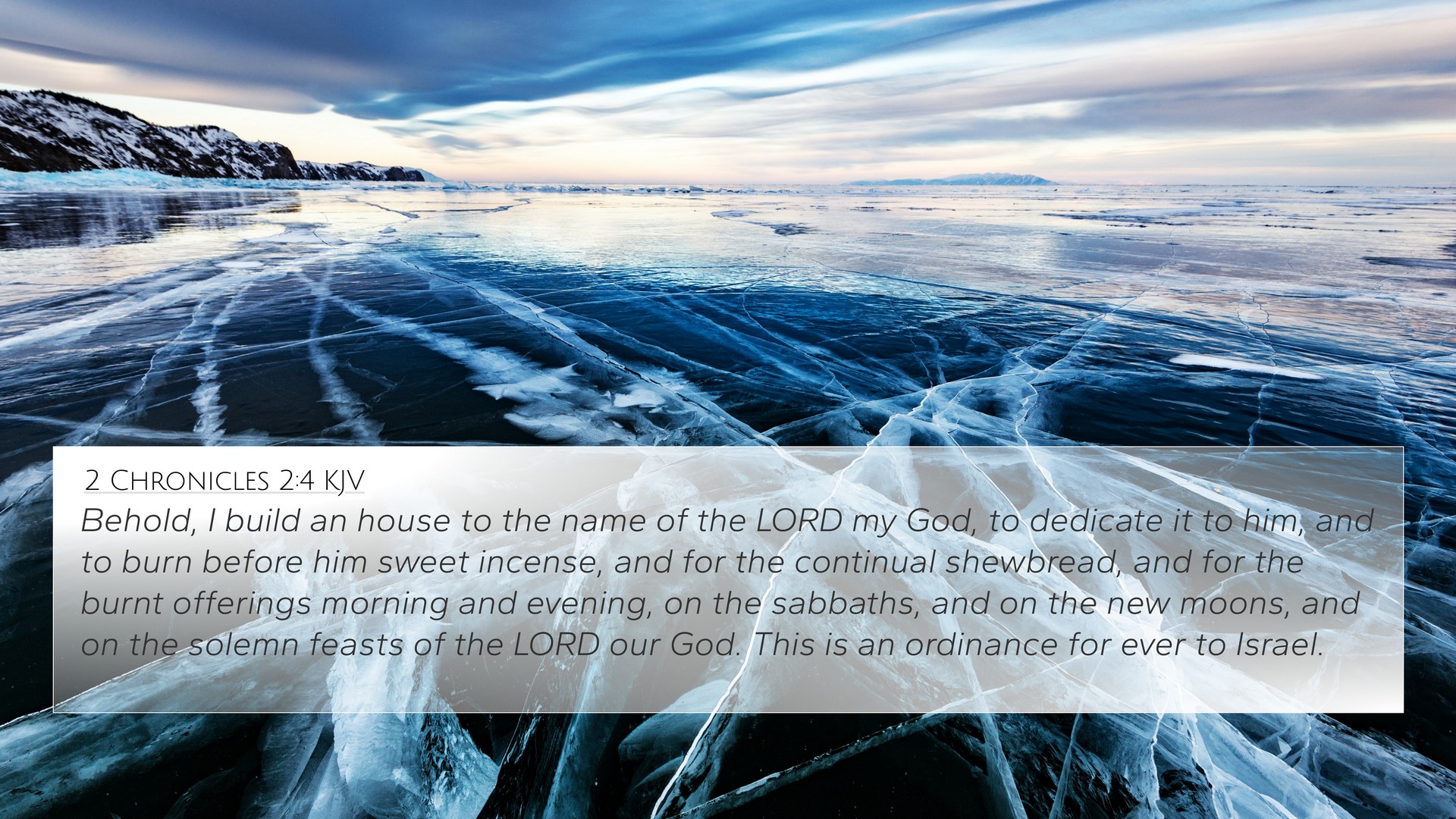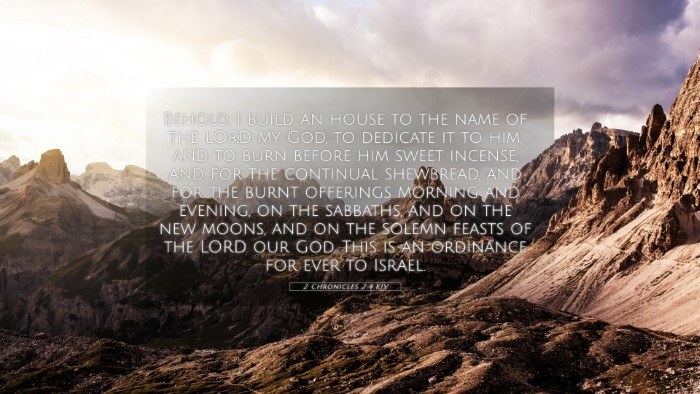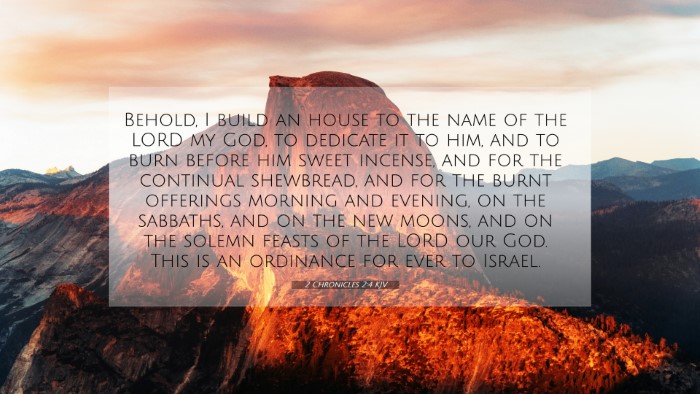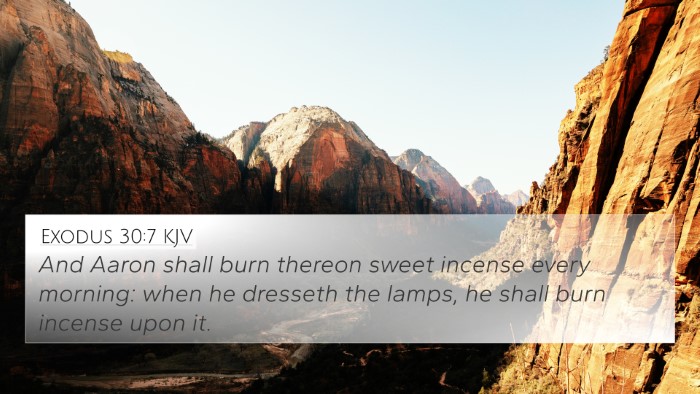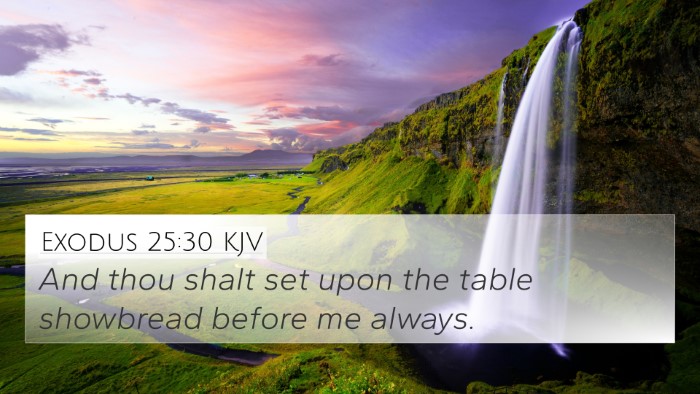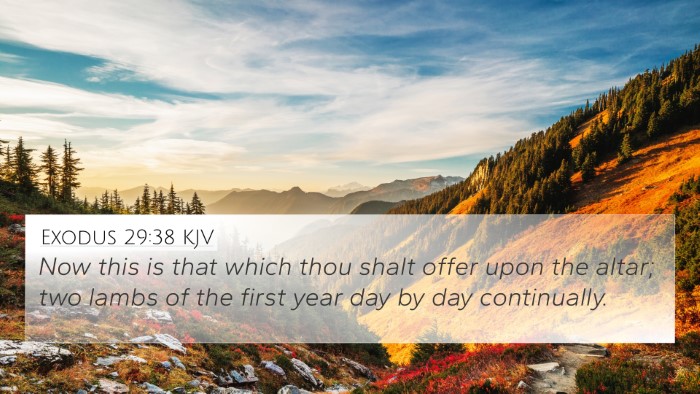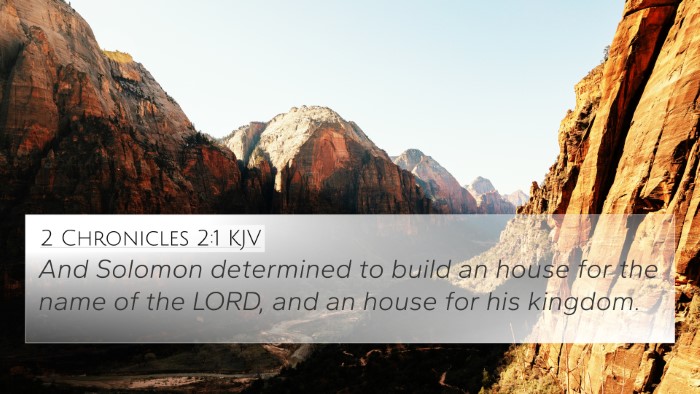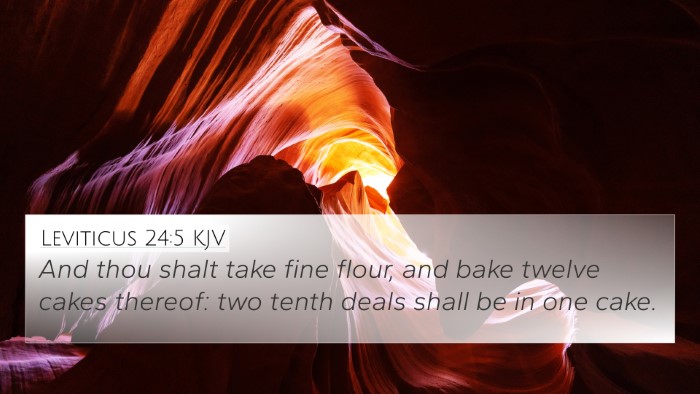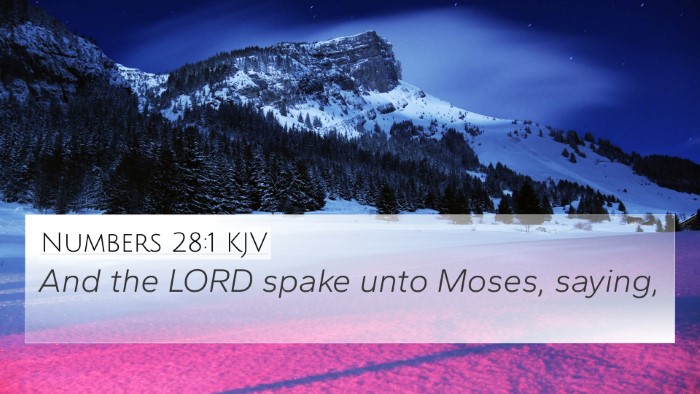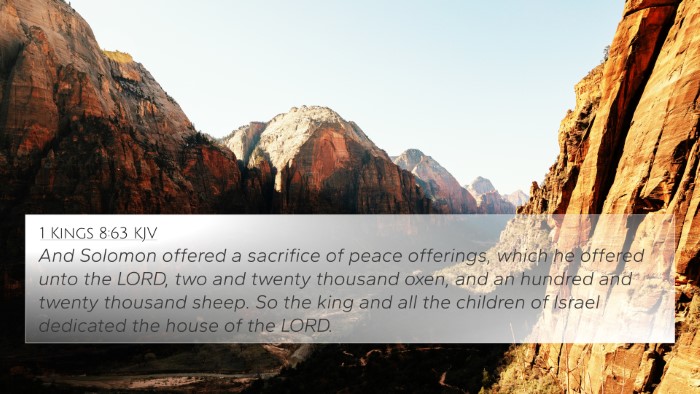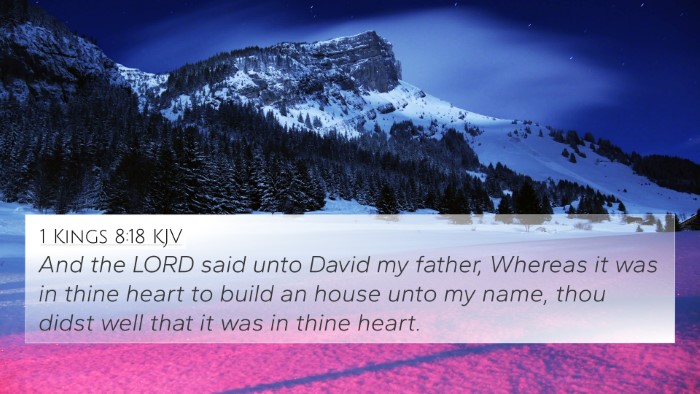Understanding 2 Chronicles 2:4
2 Chronicles 2:4 states: "Behold, I build an house to the name of the Lord my God, to dedicate it to him, and to burn before him sweet incense, and for the continual shewbread, and for the burnt offerings morning and evening, on the sabbaths, and on the new moons, and on the solemn feasts of the Lord our God. This is an ordinance forever to Israel."
Summary of Insights from Public Domain Commentaries
This verse captures King Solomon's commitment to constructing a temple dedicated to God, emphasizing worship and the importance of ceremonial offerings. The insights provided by esteemed public domain commentaries shed light on several aspects of this verse.
Divine Purpose of the Temple
Matthew Henry: Henry highlights that the temple is intended as a place where God's name will dwell—a sacred space for worship. He emphasizes that the temple’s dedication symbolizes a deeper connection between God and His people, signifying His presence among them.
Worship and Offerings
Albert Barnes: Barnes notes the specifics of worship associated with the temple, including the offerings of sweet incense and continual showbread. He stresses the importance of these practices as a means to honor God and maintain a continual relationship with Him, noting that these offerings are to be made in a structured manner—morning and evening, along with observance of sacred times such as sabbaths and new moons.
Ordinance and Legacy
Adam Clarke: Clarke points out that the establishment of such ordinances is vital for the spiritual integrity and continuity of Israel. He argues that these rituals form a lasting covenant, meant to strengthen the communal identity and serve as a remembrance of their obligations to God.
Bible Verse Cross-References
This verse interconnects with numerous other scriptures, illuminating its themes of worship, dedication, and the presence of God:
- 1 Kings 6:1: Discusses the timeline and commencement of the temple's construction.
- Exodus 25:8: God's command to build a sanctuary for His presence among the people.
- Leviticus 24:5-9: Outlines the procedures for offering showbread in the temple.
- Numbers 28:2: Details concerning the offerings and sacrifices to be made in the temple.
- 2 Chronicles 7:12-16: God's acceptance of the temple and His promises of presence and blessing.
- Psalms 132:7-9: Expresses the desire to dwell in God's house and worship Him sanctified.
- Hebrews 9:24: Connects the earthly temple with the heavenly realities and eternal priesthood of Christ.
- Romans 12:1: Invites believers to offer their bodies as living sacrifices—fulfilling the essence of worship.
- Matthew 21:13: Jesus identifies the temple as a house of prayer, reinforcing its purpose.
- John 4:21-24: Emphasizes the shift in worship from physical temples to worshipping God in spirit and truth.
Connection Between Key Themes
By analyzing these cross-referenced scriptures, we discern several overarching themes:
- The Sacredness of Place: The temple as the physical representation of God’s presence on earth.
- Worship Practices: The continuity of offering and sacrifices as vital acts of devotion.
- Divine Presence: The promise of God's presence as linked to faithfulness in worship.
- Legacy of Worship: The commitment of future generations to maintain these ordinances.
Tools for Bible Cross-Referencing
For those interested in exploring these connections further, various tools can enhance your study:
- Bible Concordance: Assists in locating specific words and their occurrences across the scriptures.
- Bible Cross-Reference Guide: Offers thematic and conceptual connections among biblical texts.
- Cross-Reference Bible Study: A method to link verses through thematic exploration.
- Bible Reference Resources: Books and online tools to aid in finding biblical connections and themes.
Understanding Biblical Connections
Connecting verses like 2 Chronicles 2:4 with other scriptures allows for a deeper comprehension of biblical narratives and messages. In studying these connections, you gain valuable insights into:
- Identifying connections between the Old and New Testaments: Discover how temple worship foreshadows the ultimate sacrifice made by Christ.
- Cross-referenced themes in the Bible: Analyze how themes of worship and presence permeate scripture.
- How to find cross-references in the Bible: Learn methods for identifying related verses to enhance your understanding.
Conclusion
2 Chronicles 2:4 enriches our understanding of the biblical narrative and the importance of worship in the life of the believer. Through cross-referencing and comparative analysis, we can appreciate the depth and continuity of God's call to worship throughout scripture.
